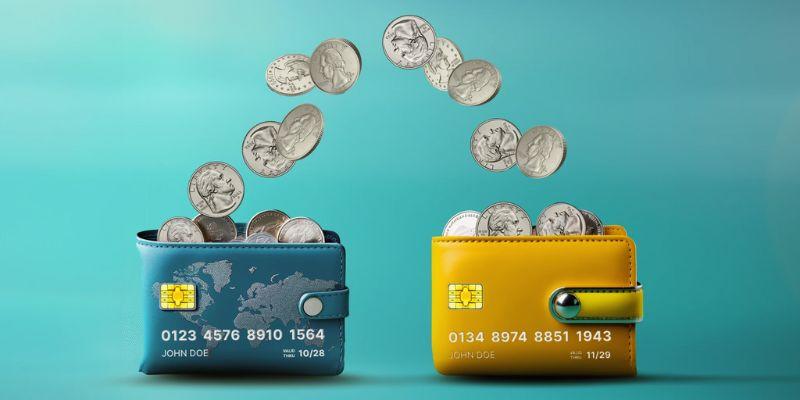Particularly when high interest rates continue to rise month after month, managing debt can feel overwhelming. One smart approach to lighten this load is a balance transfer card. It enables you to transfer your current debt onto a new card with a reduced or perhaps 0% introductory APR. It lets you concentrate on settling the debt rather than squandering money on interest, so it provides you with some breathing room.
Not every balance transfer card, though, operates the same. Everyone has varied costs, regulations, and promotional timelines. Selecting the incorrect one might increase expenses rather than save money. That is why knowing how to choose the proper card is crucial. You will learn in this guide how to evaluate offers, prevent typical errors, and design a repayment plan that actually helps you to save money.

How to Choose the Best Balance Transfer Card
Take a moment to review these key points before selecting the best balance transfer card for yourself.
Understand What a Balance Transfer Card Offers
Borrowers can control high-interest debt with a balance transfer card. It lets you transfer balances from current credit cards to a new one, sometimes with a lower or even 0% introductory APR for a certain amount of time. It can enable you to pay down your debt faster and save a significant amount of money on interest. Most issuers, though, demand a balance transfer fee, often 3% to 5% of the money shifted. For instance, moving $5,000 may range in price from $150 to $250.
Check the Length of the Introductory APR Period
When selecting a balance transfer card, a key consideration is the length of the 0% APR period. Promotional times like this can range from six months to as long as twenty-one months. The longer the interest-free time, the more time you get to pay off your balance free from further fees. Still, you should also take into account your capacity for repaying debt. A shorter time would suffice if you pay right away. However, go for the longest time if your debt is greater. Missing payments can cause the rapid cancellation of your promotional APR, so be cautious not to do so.
Look at Balance Transfer Fees
Although a balance transfer card can save you money, the costs could negate some of your total gain. Most issuers impose a fee ranging from 3% to 5% of the total sum moved. It can add up rapidly on major balances, increasing the cost of the transfer beyond what was predicted. For example, only fees could cost $500 when transferring $10,000. To maximize savings, some cards provide limited-time discounts with no transfer charges. Though they are scarce, they do exist. Before making a decision, always figure out the total cost with charges.

Compare the Regular APR After the Intro Period
A balance transfer card's beginning APR offer is not permanent. The regular APR applies after the campaign period ends. Depending on your credit history, these rates are typically higher, ranging from 16% to 28%. If you still owe money when the offer expires, interest will rapidly grow your debt. Therefore, it's crucial to consider both the continuing rate and the advertised APR.
Check for Annual Fees and Extra Charges
You should consider more than simply the APR when comparing balance transfer cards. Annual fees for certain cards might lower the general value. Though the charge is modest, it accumulates across time. Ideally, choose a card with no annual fee. Also, be careful of late payment fees or penalty APRs. Missing just one payment could cause you to lose your promotional interest rate, which would leave you with hefty costs. To understand the potential expenditures, always review the fine print thoroughly. Selecting a card free of costs and fees ensures that your money remains actual and usable.
Consider Your Credit Score
Qualifying for balance transfer cards depends greatly on your credit score. Before submitting, check your credit score and report; most issuers accept candidates with outstanding credit, often defined as a score of at least 670. Applying without good credit can reduce your likelihood of approval and further damage your credit score. Submitting too many applications in a short period may also harm your credit. If your score is low, concentrate initially on improvement by making bills on time, lowering balances, and steering clear of new debt. This readiness maximizes your likelihood of receiving the best offers.
Think About Rewards and Perks
Although a balance transfer card's primary goal is debt reduction, several also offer additional benefits. Cashback, travel points, or retail discounts could fall under this category. Although lovely, these extras shouldn't distract you from your primary objective of debt repayment. Maintaining a balance following the initial period could result in more interest than any benefits gained. Rewards can be a benefit if you are sure you will pay off your balance before the promotion expires. Consider them as extra perks all the time. Your main concern should always be reducing debt as quickly as possible and avoiding unnecessary extra costs.
Plan a Repayment Strategy Before Applying
It is wise to develop a thorough repayment strategy before applying for a balance transfer card. Start by calculating your entire balance and dividing it by the number of months in the 0% APR range. It clarifies precisely how much of a monthly payment you should make. For example, if you transfer $6,000 to a credit card with a 0% APR for 18 months, you would need to pay approximately $334 per month. This way, the balance would be guaranteed. Regular APR kicks in once everything is completely cleaned. You run the risk of carrying debt into the higher-interest era without a repayment plan, therefore negating some of the advantages acquired.
Conclusion:
Selecting the ideal balance transfer card requires deliberate consideration and preparation. Check the introductory APR period, transfer fees, regular APR, and annual fees. Approval and available opportunities depend heavily on your credit rating as well. Although rewards may look tempting, prioritizing debt repayment will always be in your best interests. Having a clear payback schedule helps you maximize the interest-free period and save a lot of money. For debt management, the proper card is a strong tool.












